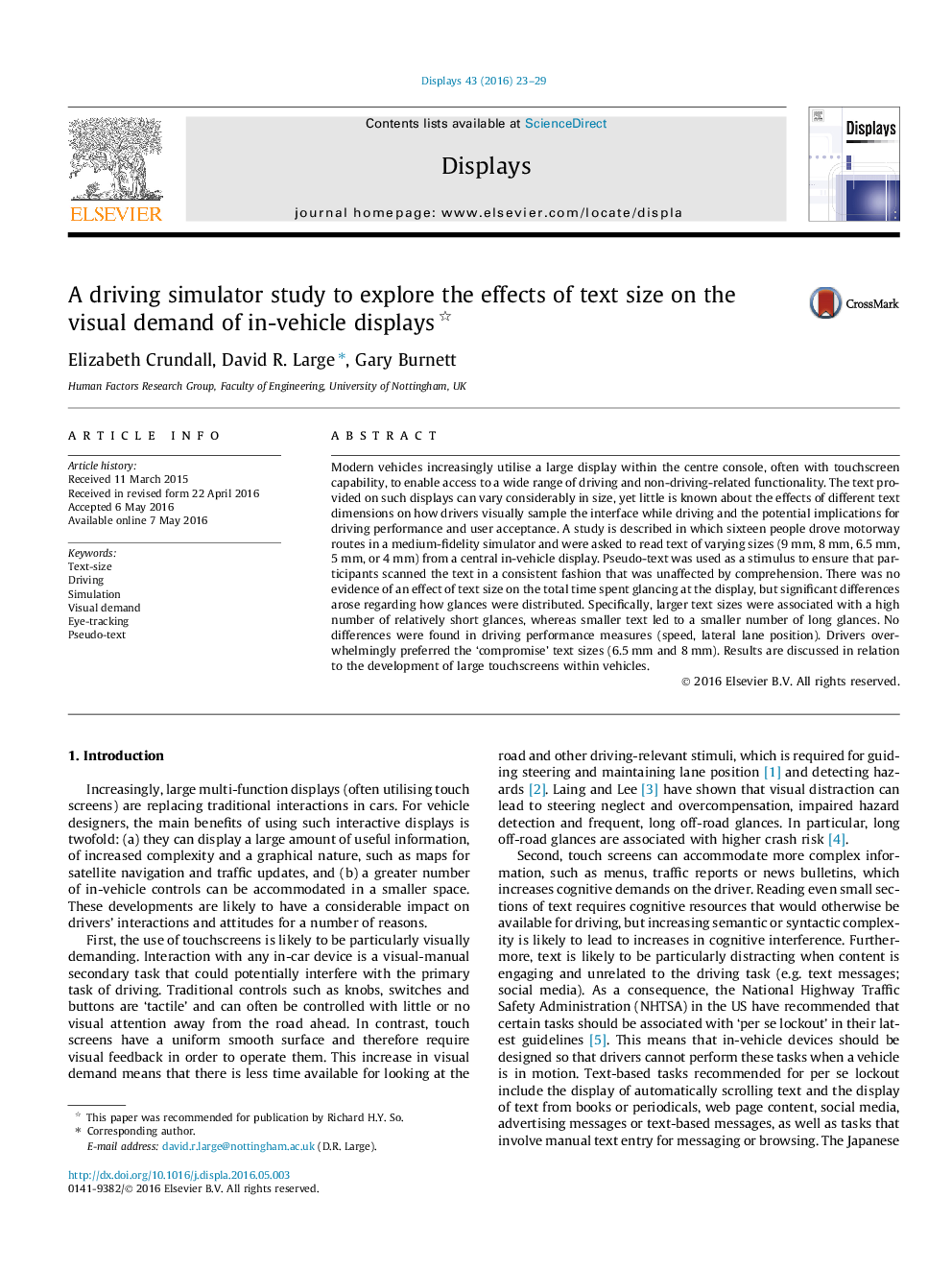| Article ID | Journal | Published Year | Pages | File Type |
|---|---|---|---|---|
| 537869 | Displays | 2016 | 7 Pages |
•A driving simulator study investigated different text sizes on an in-car display.•Larger text encouraged high numbers of relatively short glances.•Smaller text led to a lower number of longer glances.•Recommendations are made in line with NHTSA guidance on driver distraction.•Displays in vehicles should avoid text sizes of 6.5 mm or smaller.
Modern vehicles increasingly utilise a large display within the centre console, often with touchscreen capability, to enable access to a wide range of driving and non-driving-related functionality. The text provided on such displays can vary considerably in size, yet little is known about the effects of different text dimensions on how drivers visually sample the interface while driving and the potential implications for driving performance and user acceptance. A study is described in which sixteen people drove motorway routes in a medium-fidelity simulator and were asked to read text of varying sizes (9 mm, 8 mm, 6.5 mm, 5 mm, or 4 mm) from a central in-vehicle display. Pseudo-text was used as a stimulus to ensure that participants scanned the text in a consistent fashion that was unaffected by comprehension. There was no evidence of an effect of text size on the total time spent glancing at the display, but significant differences arose regarding how glances were distributed. Specifically, larger text sizes were associated with a high number of relatively short glances, whereas smaller text led to a smaller number of long glances. No differences were found in driving performance measures (speed, lateral lane position). Drivers overwhelmingly preferred the ‘compromise’ text sizes (6.5 mm and 8 mm). Results are discussed in relation to the development of large touchscreens within vehicles.
